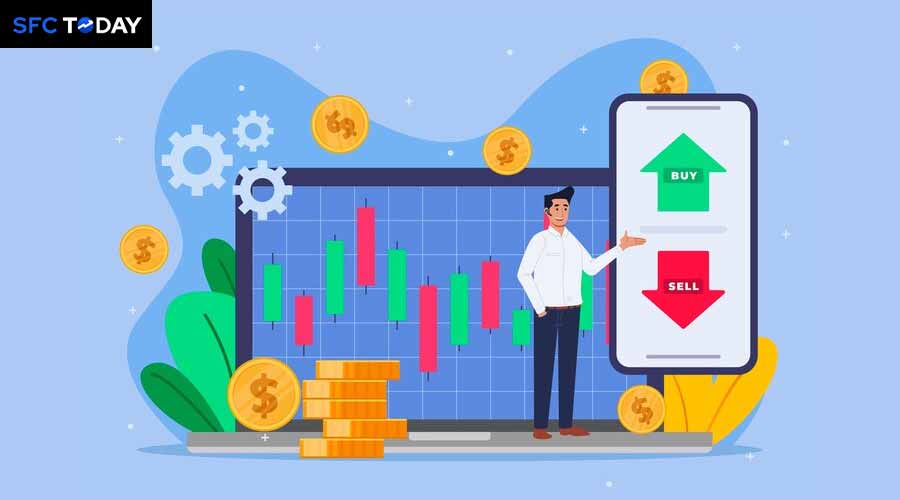Within the decentralized finance sector, two terminologies have grown equally in usage: yield farming and liquidity mining. From a DeFi perspective, both concepts help users generate passive income through the provision of liquidity across various protocols. However, the mechanism, the associated risks, and the possible rewards differ in each. This article presents a comparative analysis between yield farming and liquidity mining, including their definitions, processes, advantages, and challenges.
Here are some factors on Yield Farming vs. Liquidity Mining to distinguish:
1. Terminologies and Concepts of Yield Farming vs. Liquidity Mining
Yield Farming
Yield farming, also known as liquidity farming, is the act of making cryptocurrency assets available to decentralized finance protocols to receive interest, additional tokens, or governance tokens as a reward. The term “farming” thus finds a place because yield farmers shift their assets around different protocols in search of greater returns.
Yield farming generally involves holding or lending assets on DeFi platforms such as Compound, Aave, or Curve Finance. In most cases, these rewards are created from trading fees, interest, or freshly minted tokens by the platform as a liquidity provision incentive.
Liquidity Mining
Liquidity mining is a special form of yield farming whereby users provide liquidity to a DEX or a liquidity pool in exchange for rewards, generally rewarded in the native token of that protocol. A liquidity miner contributes their assets to liquidity pools, which facilitate trading on DEXs without traditional market makers.
A user may provide equal amounts of ETH and some stablecoin, for example, USDT, to Uniswap’s liquidity pool. In return, they receive a portion of trading fees, and they may earn some extra rewards in the form of the governance token on the platform; for Uniswap, it’s UNI.
2. Mechanisms and Processes of Yield Farming vs. Liquidity Mining
Yield Farming Mechanisms
Lending and Borrowing: Users can lend out their assets on platforms like Aave and earn interest. Similarly, they can even borrow assets with some collateral.
Staking: Users stake their tokens to a protocol and get more tokens as a result. For example, users can stake CAKE on PancakeSwap and get more CAKE tokens.
Pool switching: yield farmers move their assets across pools and sometimes across platforms for higher yields. This phenomenon is known as “yield chasing.”
Liquidity Mining Mechanisms
Providing Liquidity: A user deposits token pairs into a liquidity pool on a DEX. For example, a user can deposit ETH and DAI into Uniswap to create a liquidity pool.
Trading Fees: Some of the trading fees obtained by the DEX are rewarded to the liquidity providers for contributing to the pool.
Incentives in Native Tokens: Apart from trading fees, many times liquidity miners receive further incentives in the form of governance or native tokens of the platform. These tokens can have governance rights or be sold for profit.
3. Advantages of Yield Farming vs. Liquidity Mining
Yield Farming Advantages
Diverse Income Streams: Yield farmers can gain income through interest, trading fees, and incentive tokens.
Flexibility: Yield farmers can allocate their assets across different available platforms to maximize return.
Token Appreciation: The incentive tokens received from yield farming appreciate in value and thereby provide additional returns.
Liquidity Mining Advantages
Passive Income: Liquidity miners receive passive income through trading fees and rewards by not necessarily actively managing their assets.
Incentive Alignment: Liquidity mining aligns the interests of users and the platform by encouraging long-term participation and liquidity provision. Early Access to New Tokens: Early liquidity miners get the chance to earn new tokens, probably at cheap prices before appreciation.Risks and Challenges of Yield Farming vs. Liquidity Mining
Risks Associated with Yield Farming
Impermanent Loss: This is when liquidity providers experience losses compared to holding their assets and if the value of provided assets changes.
Smart Contract Risks: It can result in the loss of funds due to vulnerabilities in the smart contracts.
Regulatory Risks: A regulatory change would be detrimental to the legal status and profitability of yield farming.
Risks Associated with Liquidity Mining
Market Volatility: The value of the deposited token will either appreciate or depreciate and affect the value of rewards.
Impermanent Loss: Liquidity miners, just like in yield farming, can experience an impermanent loss.
Risks of Liquidity Pools: Smart contract problems or a hack of the platform can drain liquidity pools.
Conclusion
Yield farming and liquidity mining are critical components that allow users to generate some passive income in the DeFi ecosystem. While both involve the provision of liquidity with rewards in return, yield farming is a broader concept of lending, borrowing, and staking. On the other hand, liquidity mining is specifically linked to the provision of liquidity on decentralized exchanges.
Investors should be at liberty to debate the advantages and disadvantages of each strategy. On the other hand, yield farming offers flexibility and diverse streams of income; it comes with a high degree of risk due to the complexity and volatility of the DeFi market. In contrast, liquidity mining is an easier way to farm rewards, with its risks attached to market volatility and impermanent loss.
Ultimately, the choice between yield farming and liquidity mining rests on the investor’s risk tolerance, understanding of DeFi, and financial goals. As in any other type of investment, one needs to do detailed research and exercise a great deal of caution when treading through these highly innovative yet terribly complex financial strategies.


